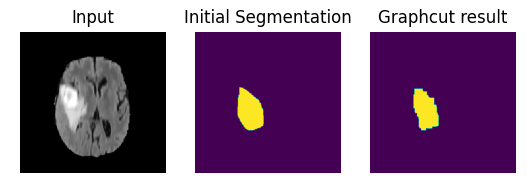Numpy-based implementation of Max-flow/Min-cut based on the following paper:
- Boykov, Yuri, and Vladimir Kolmogorov. "An experimental comparison of min-cut/max-flow algorithms for energy minimization in vision." IEEE transactions on pattern analysis and machine intelligence 26.9 (2004): 1124-1137.
If you want same functionality in PyTorch, then consider PyTorch-based implementation
If you use this code in your research, then please consider citing:
Asad, Muhammad, Lucas Fidon, and Tom Vercauteren. "ECONet: Efficient Convolutional Online Likelihood Network for Scribble-based Interactive Segmentation." Medical Imaging with Deep Learning (MIDL), 2022.
pip install numpymaxflow
or
# Clone and install from github repo
$ git clone https://github.com/masadcv/numpymaxflow
$ cd numpymaxflow
$ pip install -r requirements.txt
$ python setup.py install
Maxflow2d
Interactive maxflow2d
The following demonstrates a simple example showing numpymaxflow usage:
image = np.asarray(Image.open('data/image2d.png').convert('L'), np.float32)
image = np.expand_dims(image, axis=0)
prob = np.asarray(Image.open('data/image2d_prob.png'), np.float32)
lamda = 20.0
sigma = 10.0
post_proc_label = numpymaxflow.maxflow(image, prob, lamda, sigma)For more usage examples see:
2D and 3D maxflow and interactive maxflow examples: demo_maxflow.py
This repository depends on the code for maxflow from latest version of OpenCV, which has been included.






